Spring Celebrations at UNI
Two traditional celebrations have been held at UNI in the past to welcome spring and warm weather: the May Day Celebration was held from 1913 through 1934, and the SUNI Daze celebration was held from 1971 through 1980. These two celebrations offered days filled with activities, music, food, friends, and fun.
May Day
The first May Day celebration was held May 1, 1908. The advanced rhythm classes performed a story dance about nymphs and sprites celebrating May Day and worshipping Terpsichore. They finished the dance by winding up the May pole in the May pole dance.

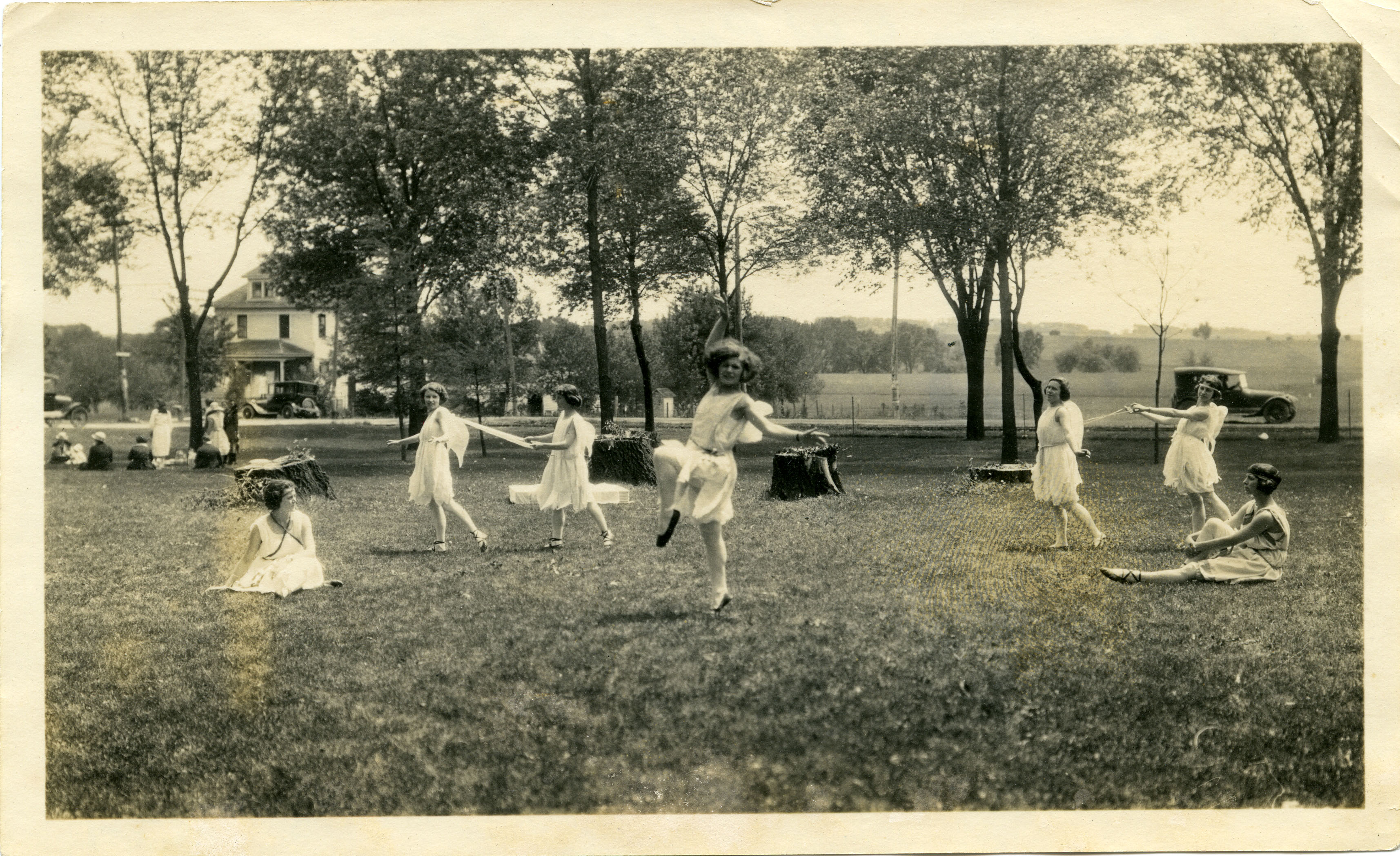
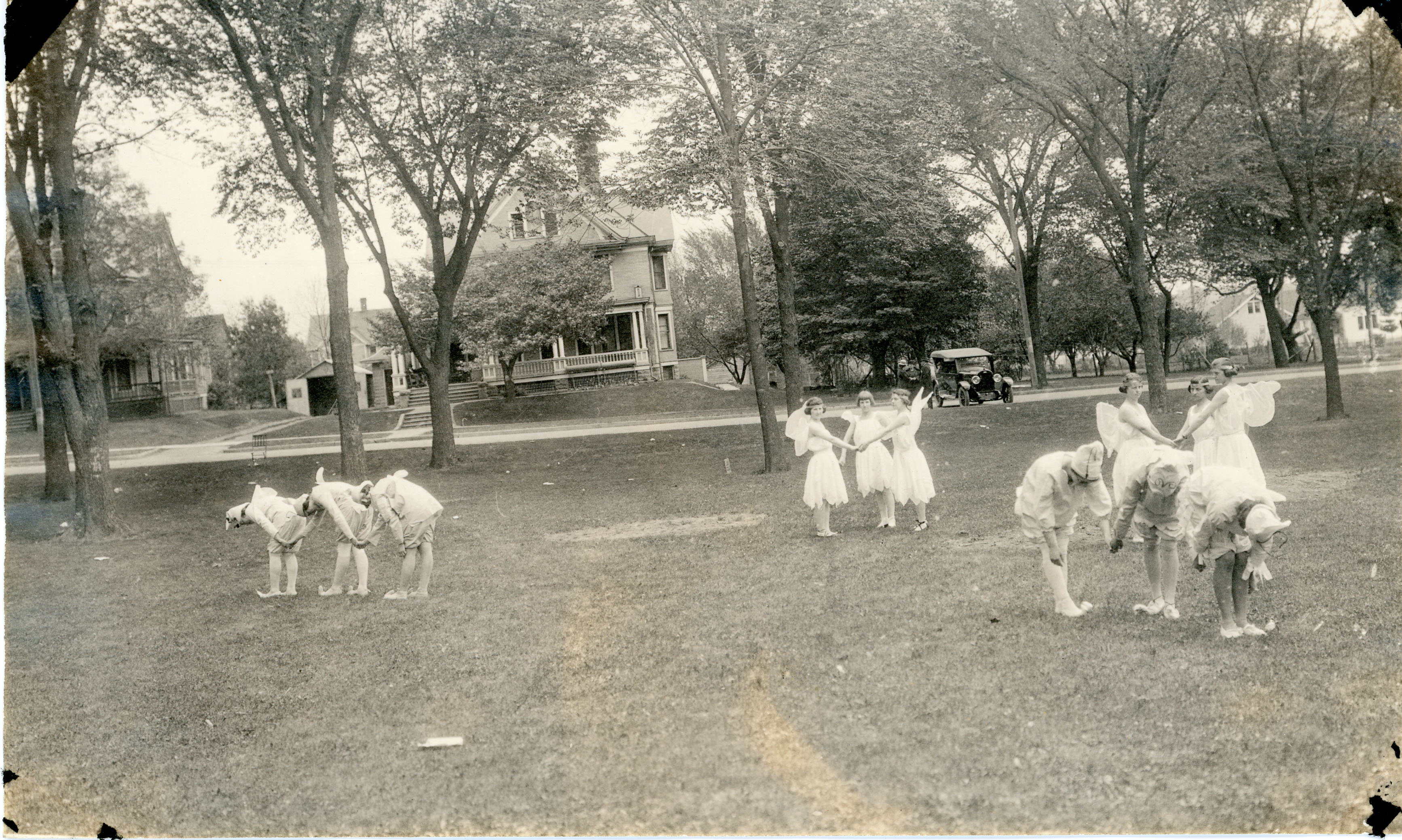
The photograph to the left is of May Day dancers performing on the same lawn outside Seerley Hall. The road running horizontally across the photo is now called College Street. Other dances such as Japanese Dance, Folk Dance, and Milkmaids Dance were also performed at the celebrations.
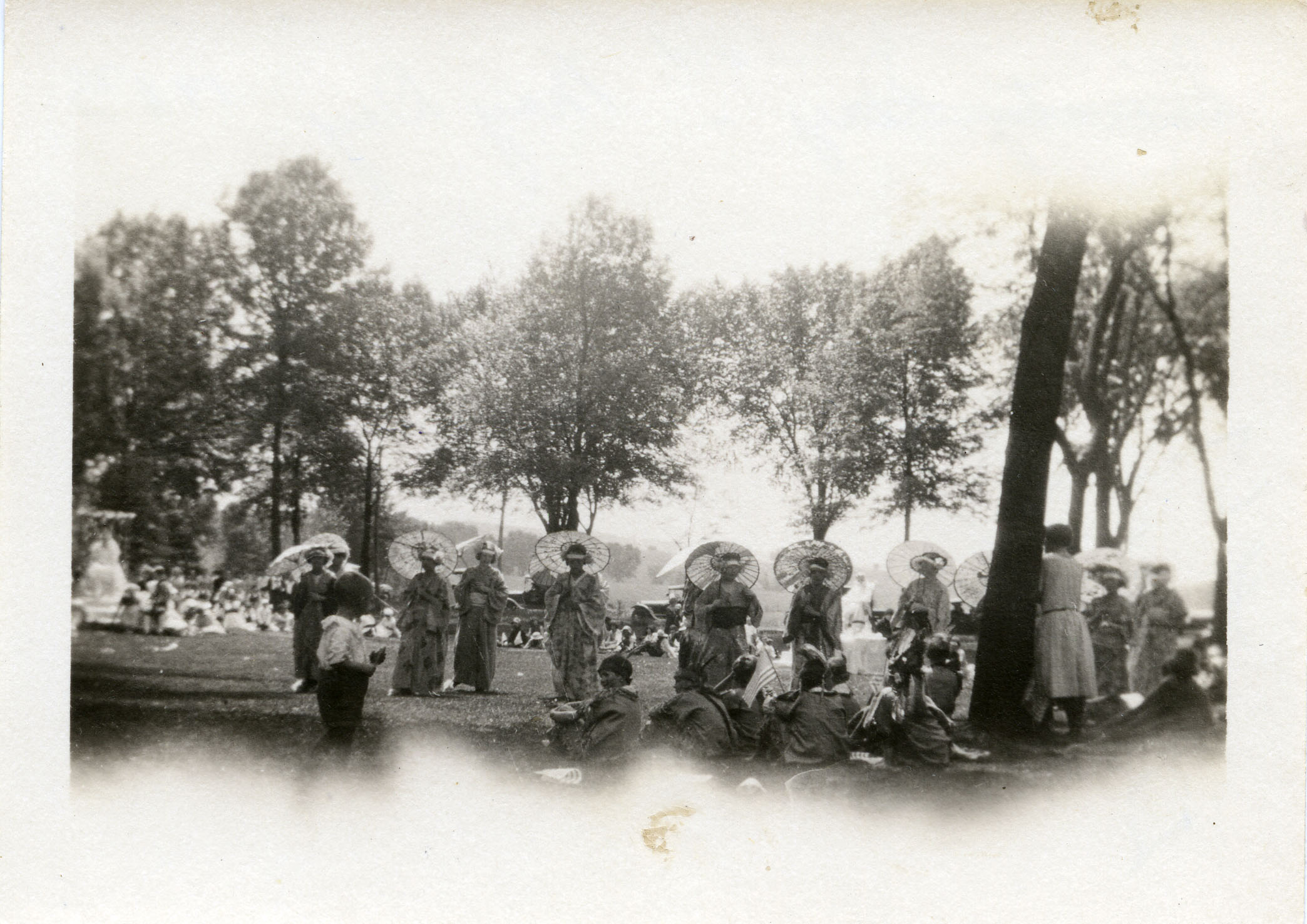
The photo to the right shows the Japanese dance which was performed during May Day in 1913.
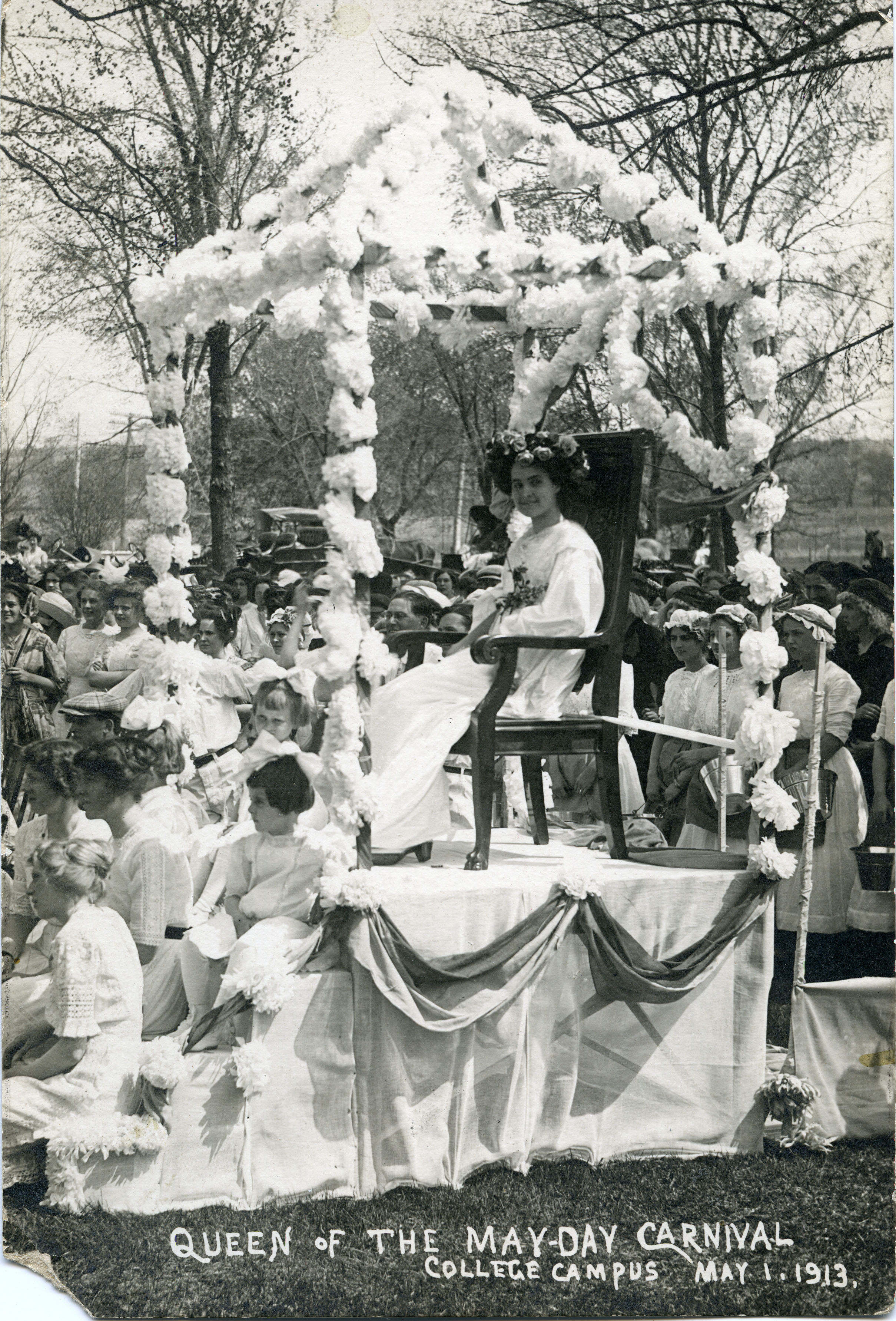
The May Queen was chosen by her peers and could be from any class. In 1914, the five divisions of the senior class nominated 2 candidates each. Then the 10 were voted on and the top 3 were kept in the running. Finally, out of those three the students chose their queen. In 1913, Mrs. Blanch Walters became the first May Day Queen. The photo to the right shows Mrs. Walters with her court.
Among the other activities held during May Day were dances, a parade, a baseball game between Cedar Falls professionals and the varsity team, and a concert on the steps of Seerley Hall. A picnic dinner was also held at 12:00 p.m. at the 1913 celebration. The profits from all the food booths financed the construction of the gateway to campus on the corner of 23rd street and College Street.

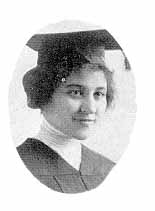
The 1914 May Queen was Hazel B. Strayer, after whom the Strayer-Wood Theatre was partly named. She received her A.B. degree in interpretive speech and drama from the Iowa State Teachers College (UNI) in that same year. During this celebration, each class also had to perform a stunt or skit for the crowd.
May Day was not held in 1917 because of financing difficulties. World War I had cut funding for the celebration so the school called on its students to help out. The students were not willing to pay $.40 a person to hold the event.
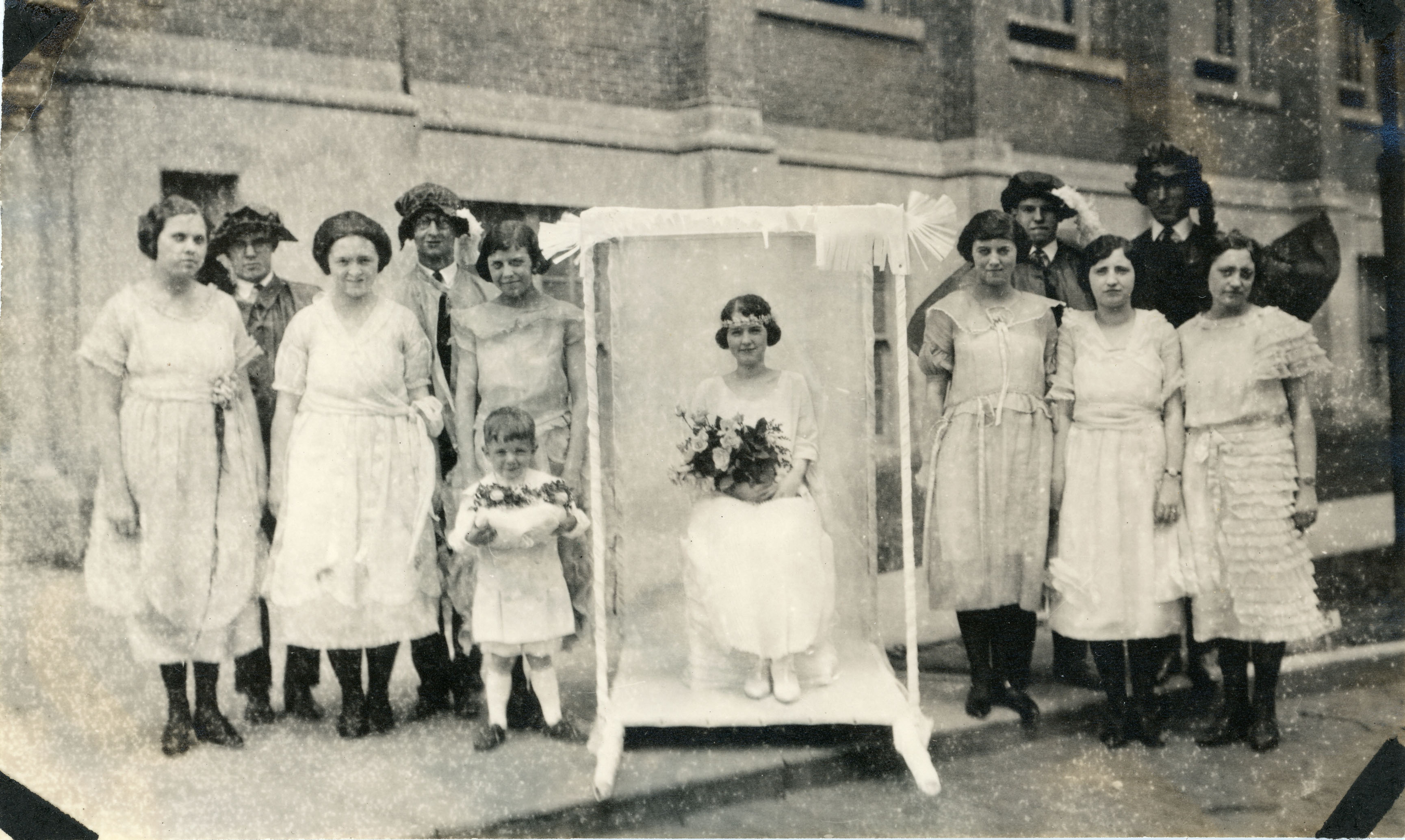
However, in 1918, a day was set aside for celebration, though it was not May 1st and its name had changed. In the middle of the month Patriotic Day was held. It was to be a day for the students to remember the importance of an event five years previous. The B. A. course was set to be eliminated but the decision was reversed. President Seerley approved May Day to celebrate the news. The events included a patriotic concert, address, machine gun demonstration, and war song sing-a-long. Instead of the May Pole dance, they had dancers representing the groups in the war effort.
In 1919, the traditional May Day was again held. However, it was held on the 14th instead of the 1st. Students also had to pay $.50 to finance the festivities.
These are photos from the 1922 May Day parade. Each float was created by a class or an organization.
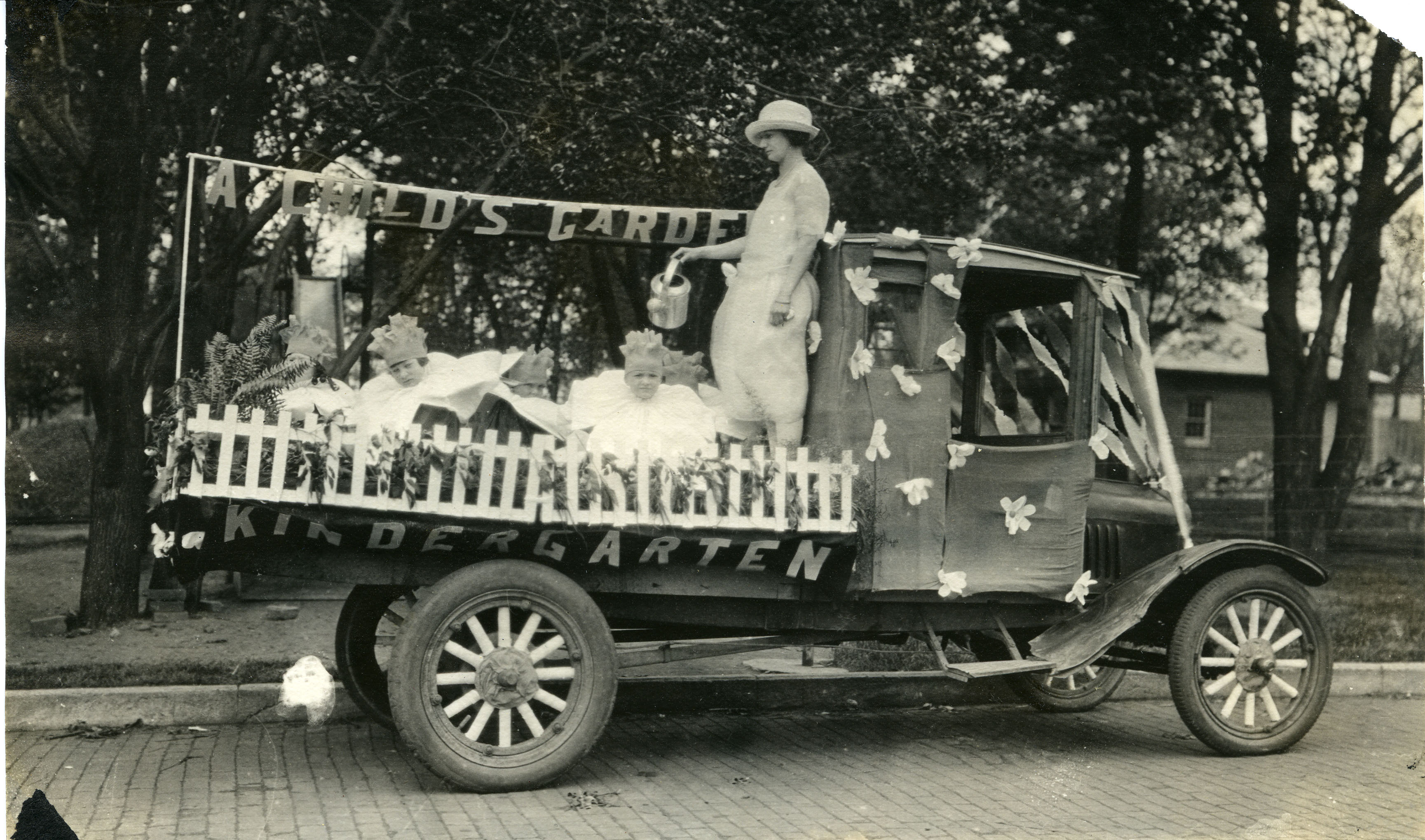
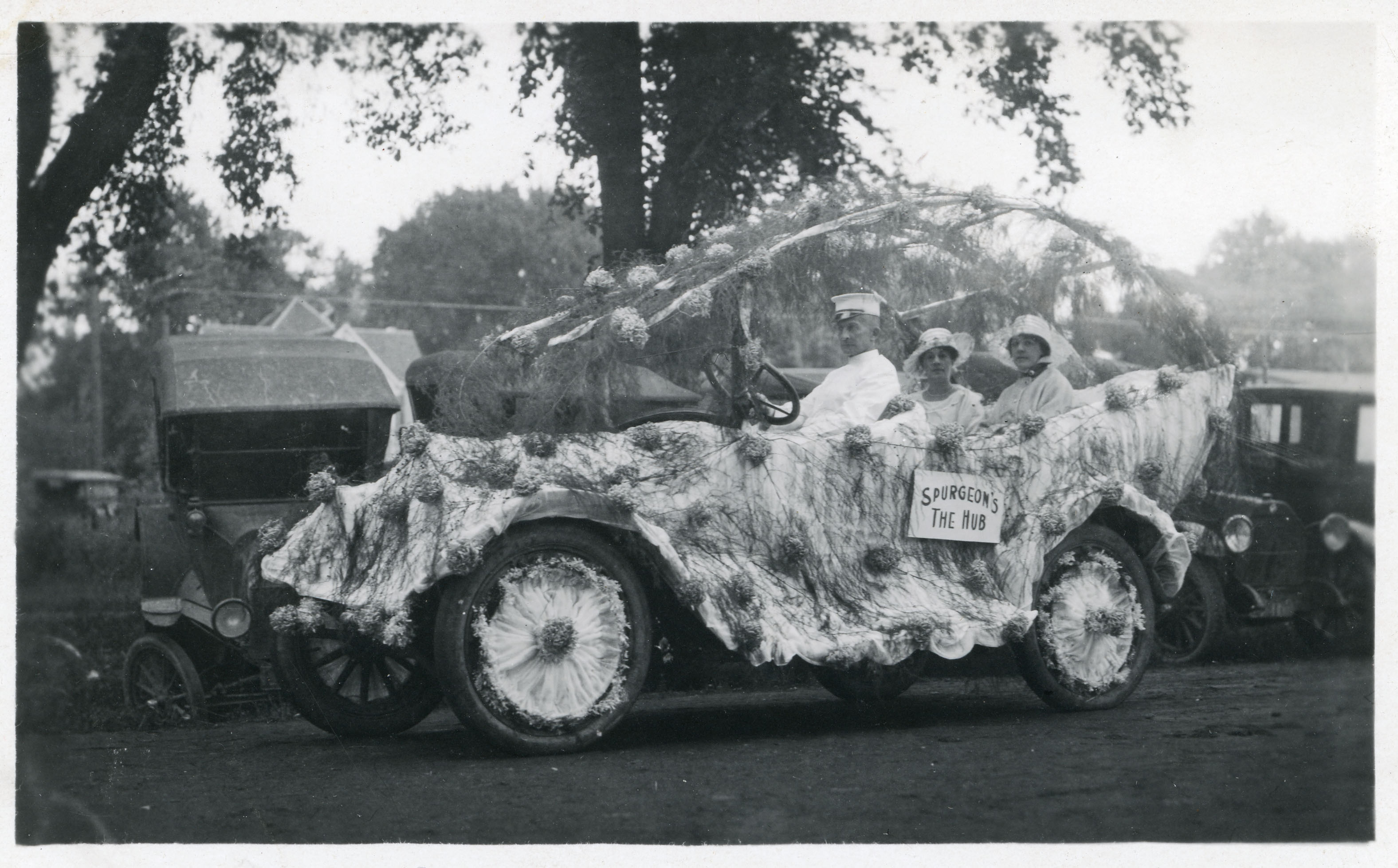
In October, 1934 the Student Council abolished the annual May Day celebration. The president of the Council, David Grant, stated that it was unnecessary because the Tutor Ticklers show was the creative program of the midyear.
SUNI Daze
SUNI Daze began in 1971 as a week-long celebration. The organizers described the celebration as UNI's version of Iowa State University's VEISHEA. Planning for this first event began in spring 1970 as students discussed how to celebrate the season. That fall, their plans became more definite. Their goal was for students from all groups to participate in this last big event before finals.
The name of this celebration varied throughout its history. In 1971 it was called SUNI, standing for "Spring at UNI." Until it ended in 1980, it was referred to as SUNI Days or SUNI Daze.
The schedule for the first SUNI celebration announced activities such as co-ed Olympics, rock concert, cult opera, Thieves Market, picnic, regatta, and carnival. Many of these activities were held each year during SUNI Days celebrations.
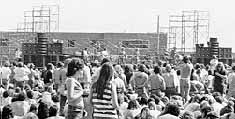
This open air rock concert was held at the 1974 SUNI Days festival. The Eagles and REO Speedwagon performed for a crowd of around 10,000. Steely Dan was also scheduled to appear but backed out because they were not satisfied with concert conditions.
In 1972 the theme of SUNI Days was "Community Unity." Organizers wanted the events "to bring about communication and sensitivity among the social, spiritual, economic, political, academic, administrative, and all aspects of university life." Later celebrations were not centered around themes.
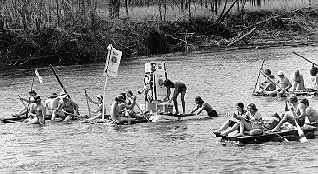
The regatta race was an annual SUNI event. Students raced homemade boats down the Cedar River from Black Hawk County Park to Island Park in Cedar Falls. They could not use preconstructed boats; participants had to construct their boats out of rubber, styrofoam, wood or whatever materials would float them down the river to the finish line.
Thirteen crafts raced in the 1974 regatta. The numbers increased to 90 rafts by 1978. These two photos are of the 1977 regatta race.
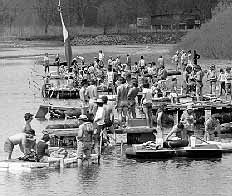
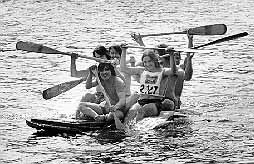
The photo to the left shows students readying their boats on the river front at Black Hawk Park. To the right, six students are very happy their boat is still afloat.
In 1978, organizers of the regatta faced one major obstacle. The state had taken control of the river area the previous year. This meant UNI had to gain approval of the Iowa Conservation Commission in order to hold the event. After much discussion and postponing the race, approval was granted.
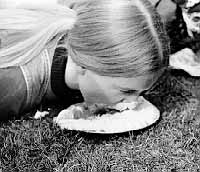
After the regatta race down the Cedar River, students enjoyed a pig roast and beer party. Until 1978, the event was held at Island Park, where the regatta race finished. That year organizers were forced to move the party to Black Hawk Park because a city ordinance would not allow the consumption of alcohol on city property. Alcoholic beverages were allowed at Black Hawk Park because it was a county park.
Another popular event during SUNI Days was the Co-ed Olympics. In 1975, the competitions included a pie eating contest, mattress races, tug-of-war, greased pig, and many others. These were held at different times throughout the week. The winners of the events received prizes, such as kegs of beer.
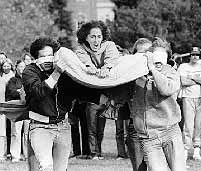
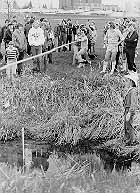
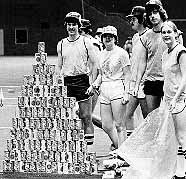
The tug-of-war, shown to the left, was held at Dry Run Creek northwest of the Towers residence halls. Here students get ready to pull the other team into the murky water.
The name of the event to the right was the "Miller Stack-up." The goal was to stack the most cans as possible in 90 seconds. The All-Stars team won by stacking 76 cans in 1978.
In 1981, the student government decided that SUNI Daze would not be held. Their reasons included the lack of a permanent SUNI committee and a faculty advisor, a reduction in state financing for the university, and an increase in enrollment. Other organizations sponsored alternative celebrations.
In 1995 students attempted to revive SUNI Daze as a spring celebration and a farewell to the departing President Constantine Curris.
Actual exhibit and web version prepared by Susan Witthoft Special Collections and University Archives February 1997; April 1997; photos updated and citations added by Graduate Assistant Eileen Gavin, May 15, 2025
